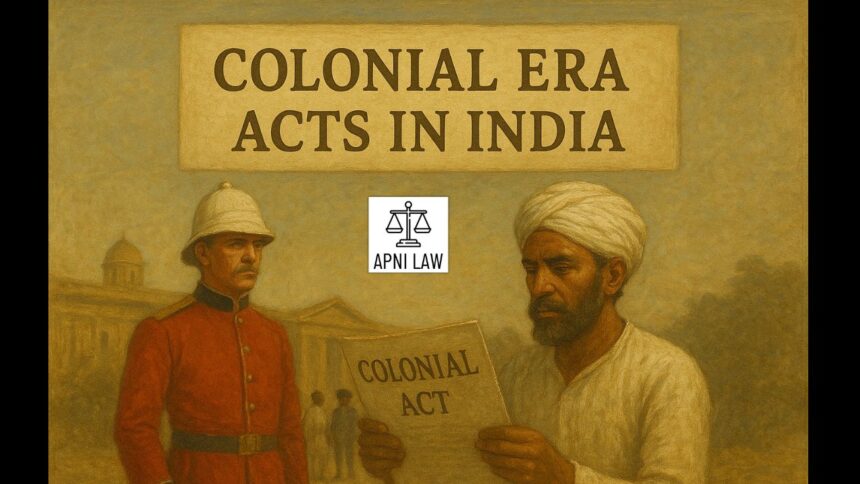Introduction
The Indian Independence Act of 1947 remains one of the most defining moments in modern history. It was the legislation that officially ended nearly two centuries of British colonial rule in India and gave birth to two independent nations, India and Pakistan. Passed by the British Parliament on 18 July 1947, the Act laid down the framework for partition and transfer of power. While it marked the triumph of India’s long struggle for freedom, it also carried the painful legacy of division, communal violence, and mass migration.
Understanding the Indian Independence Act requires looking at the historical background, its provisions, the immediate consequences of partition, and its enduring impact on the subcontinent.
Background to the Indian Independence Act
By the 1940s, it had become clear that British rule in India could not continue indefinitely. The Quit India Movement of 1942, combined with the rising strength of the Indian National Congress and the Muslim League, placed enormous pressure on the colonial government. Britain’s economic and military exhaustion after World War II further accelerated the push for independence.
The Cabinet Mission of 1946 attempted to create a united India with a federal structure, but disagreements between the Congress and the Muslim League stalled the plan. Communal tensions rose dramatically, with widespread riots in Bengal and Punjab. Muhammad Ali Jinnah and the Muslim League firmly demanded a separate state for Muslims, arguing that coexistence in a single nation would not protect their political and cultural rights.
In February 1947, British Prime Minister Clement Attlee announced that Britain would quit India no later than June 1948. However, Lord Mountbatten, the last Viceroy of India, expedited the process. His June 3rd Plan proposed the partition of India, which formed the basis of the Indian Independence Act.
Provisions of the Indian Independence Act 1947
The Act was short yet transformative, consisting of twenty sections. Its key provisions defined the new political realities of the subcontinent.
Creation of Two Dominions
The Act created two independent dominions, India and Pakistan, effective from 15 August 1947. Each dominion had the authority to frame its own constitution and govern itself without interference from Britain. Until new constitutions were adopted, the Government of India Act 1935 continued as the legal framework.
Partition of Provinces
The Act divided two large provinces, Punjab and Bengal, into two parts, with each dominion taking control of one portion. This division was decided by the Boundary Commissions led by Sir Cyril Radcliffe. The partition of these provinces became the epicenter of communal violence and displacement.
Transfer of Power
All powers of British authority, including sovereignty, were transferred to the Constituent Assemblies of India and Pakistan. These assemblies became the supreme law-making bodies in their respective dominions.
End of British Paramountcy
The Act ended the paramountcy of the British Crown over Indian princely states. The rulers of these states were free to join either India or Pakistan or remain independent. This provision created immense political challenges, particularly in states like Hyderabad, Kashmir, and Junagadh.
Position of the Governor-General
Each dominion was to have a Governor-General appointed by the British King on the advice of the respective dominion’s leaders. Lord Mountbatten became the first Governor-General of independent India, while Muhammad Ali Jinnah assumed the role in Pakistan.
The Partition and Its Consequences
While the Act legally created two nations, the partition of India was not a peaceful transition. The announcement of borders triggered unprecedented communal violence. Millions of Hindus, Muslims, and Sikhs migrated across the new frontiers, often facing brutal attacks. Estimates suggest that nearly one million people lost their lives, and around twelve to fifteen million were displaced.
Trains carrying refugees became symbols of tragedy, arriving at their destinations filled with corpses. Villages were burned, families torn apart, and centuries of coexistence shattered in weeks. Partition left scars that still influence relations between India and Pakistan.
Despite the violence, the Indian Independence Act also symbolized resilience. India embarked on the journey of becoming a secular, democratic republic, while Pakistan began shaping its identity as a homeland for Muslims.
Significance of the Indian Independence Act
The Act was significant not only because it marked the end of colonial rule but also because it reshaped South Asia. For India, it meant the realization of a long-cherished dream of self-rule. For Pakistan, it was the culmination of the demand for a separate homeland.
Politically, the Act granted complete legislative sovereignty to both nations, allowing them to draft their own constitutions. For India, this meant the Constituent Assembly could create a democratic framework rooted in justice, liberty, equality, and fraternity.
At the same time, the Act’s provision regarding princely states created complex issues of integration. Sardar Vallabhbhai Patel and V.P. Menon played a crucial role in bringing most states into the Indian Union, ensuring political stability in the years following independence.
Frequently Asked Questions
What was the Indian Independence Act 1947?
The Indian Independence Act was a law passed by the British Parliament that created the independent dominions of India and Pakistan. It came into effect on 15 August 1947 and ended British rule in India.
Why did partition happen along with independence?
Partition occurred because the Indian National Congress and the Muslim League could not agree on a united framework for governance. The Muslim League demanded a separate homeland for Muslims, leading to the creation of Pakistan.
What were the consequences of the Act?
The Act led to independence for India and Pakistan but also triggered mass migration, communal riots, and the displacement of millions. It also created challenges related to the integration of princely states.
Conclusion
The Indian Independence Act of 1947 was both a moment of triumph and tragedy. It ended nearly two hundred years of colonial domination and gave birth to two sovereign nations. At the same time, it unleashed one of the largest human migrations in history, marked by violence and suffering.
For India, the Act paved the way for the drafting of a democratic Constitution and the creation of a secular republic. For Pakistan, it laid the foundation of a new nation striving to define its identity. Together, the Act and its aftermath remain a powerful reminder of the costs of freedom and the resilience of people determined to chart their own destinies.
The legacy of the Indian Independence Act continues to shape the subcontinent’s politics and relationships. It is remembered not only as the law that gave independence but also as the event that redrew the map of South Asia forever.
For any specific query call at +91 – 8569843472








